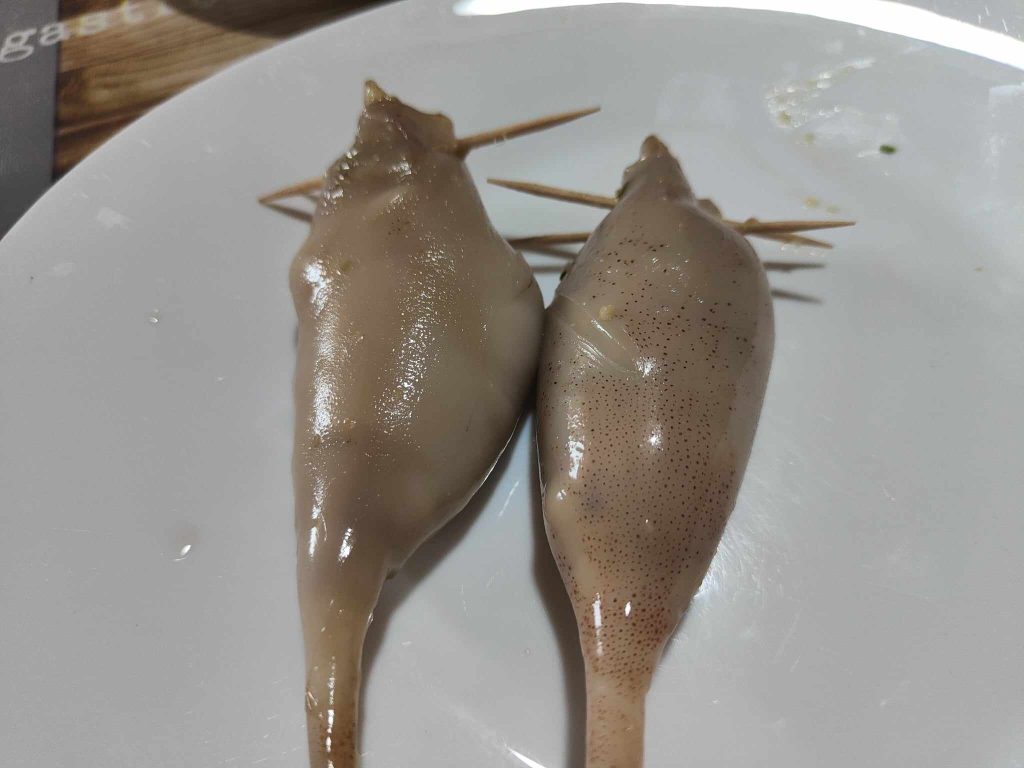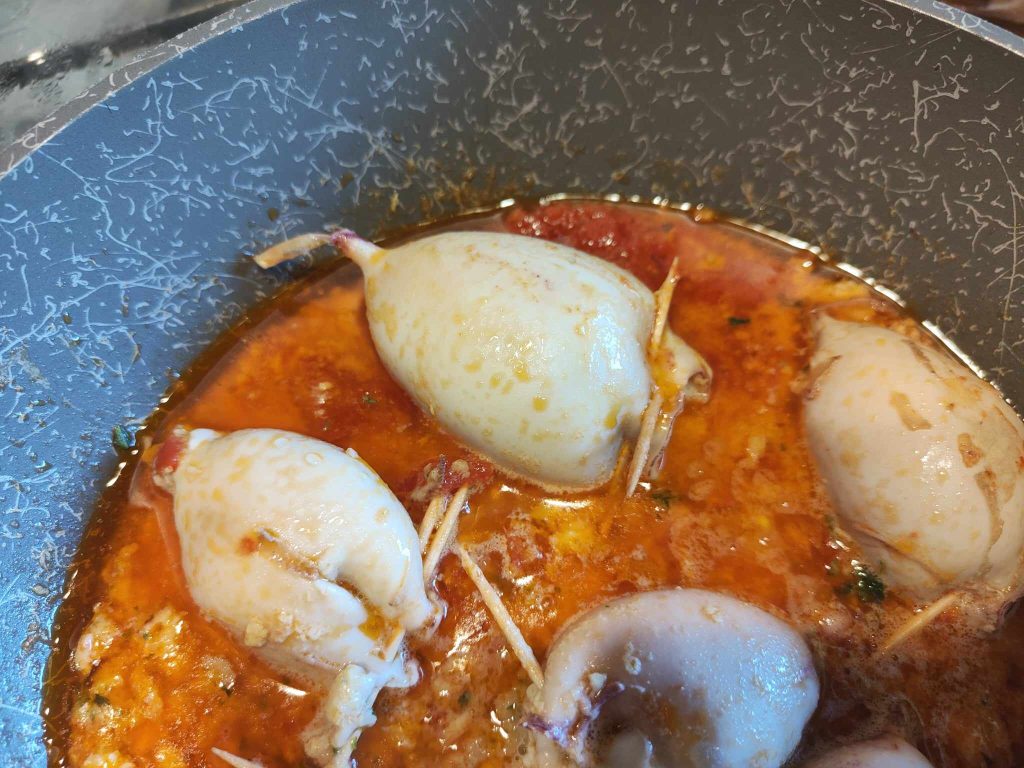The stewed stuffed squids are one of the most classic fish dishes, perfect for many occasions.
A perfect seafood main dish for everyday cooking or for Sunday lunch and festive days with friends and family.
In fact, it is a dish that is very easy to prepare but always very successful. A very simple recipe, with a few simple ingredients, and a truly delicious tomato sauce where a fantastic bread mop is welcome with slices of rustic bread.
This dish will be perfect at any time of the year, cooked in a pan without turning on the oven and it cooks in a few minutes.
Squids are mollusks that can be used for preparing different courses, from a salad enjoyed as an appetizer or main dish to a main course of stuffed squids.
Unlike calamari, squids are less refined and cheaper, making them perfect, for example, for a light lunch prepared at home.
Let’s see how to make this dish and some useful tips for a truly perfect and very tasty result.

- Difficulty: Easy
- Cost: Cheap
- Preparation time: 20 Minutes
- Portions: 4
- Cooking methods: Stovetop
- Cuisine: Italian
- Seasonality: All Seasons
- Energy 330.45 (Kcal)
- Carbohydrates 22.93 (g) of which sugars 2.02 (g)
- Proteins 24.50 (g)
- Fat 16.74 (g) of which saturated 5.32 (g)of which unsaturated 3.21 (g)
- Fibers 2.21 (g)
- Sodium 993.37 (mg)
Indicative values for a portion of 180 g processed in an automated way starting from the nutritional information available on the CREA* and FoodData Central** databases. It is not food and / or nutritional advice.
* CREATES Food and Nutrition Research Center: https://www.crea.gov.it/alimenti-e-nutrizione https://www.alimentinutrizione.it ** U.S. Department of Agriculture, Agricultural Research Service. FoodData Central, 2019. https://fdc.nal.usda.gov
Ingredients for Stuffed Squids
- 28 oz squids
- 1 egg
- 3.5 oz stale bread (the crumb)
- to taste milk
- 1 ⅔ cups tomato puree
- 1.4 oz Parmesan cheese
- 1 clove garlic
- to taste parsley
- to taste extra virgin olive oil
- salt
- pepper
- 1 leaf bay leaf
- to taste breadcrumbs (if needed)
Tools
- Pan
- Bowl
- Scissors
- Toothpicks
- Lid
Steps for Stuffed Squids
To prepare this recipe, first, you need to clean the squids thoroughly.
After rinsing them under running water, separate the mantle from the head, being careful to remove the eyes.
Then remove all the innards inside and the small colorless cartilage present in the mantle.
After removing the beak from the tentacles, peel the squid by delicately incising the outer skin and pulling it off by hand.
Rinse thoroughly under running water.
Once rinsed, separate the tentacles from the mantle with a small knife and set them aside.
Place the pouches on a cloth and dry them thoroughly.
Prepare a bowl with the broken-up stale bread and soak it in milk for 30 minutes.
First, in a sufficiently large pan, heat some extra virgin olive oil.
Sauté the tentacles in the pan with oil and bay leaf for a few minutes.

After the bread’s resting time, squeeze it very well.
In a bowl, mix the squeezed bread with egg, cheese, salt, and pepper.
Incorporate the tentacles, and the filling is ready.
If it seems too mushy, add half a tablespoon of breadcrumbs.

Take the squids and fill them with a teaspoon, but don’t overfill them, then use wooden sticks to close them.
(Tip: don’t overfill the squids because they may open during cooking).

Place a pan on the stove, adding three tablespoons of extra virgin olive oil, a whole clove of garlic, and the tomato puree.
Cook for ten minutes, seasoning with salt and pepper to taste.
Retrieve the previously stuffed squids and place them in the pan.
Cook them for twenty minutes, turning them occasionally. “On low heat”
Cooking times may vary slightly depending on the size of the squid.
If the sauce dries up, add a little hot water.

Remove the whole clove of garlic from the pan.
Place the stuffed squids on a serving dish, and dress them with the rich sauce.

Enjoy your meal.

Storage
Squid is a highly perishable food. If freshness cannot be assured, it is highly recommended to purchase it frozen.
The storage of fresh or defrosted squid should occur in the refrigerator, on the shelf dedicated to meat and fish, or at the lowest possible temperatures. If the temperature or storage time is excessive, the squid acquires an unpleasant sulfur smell; although not entirely related to bacterial proliferation, this inconvenience makes the food no longer edible.
The storage of fresh or defrosted squid should occur in the refrigerator, on the shelf dedicated to meat and fish, or at the lowest possible temperatures. If the temperature or storage time is excessive, the squid acquires an unpleasant sulfur smell; although not entirely related to bacterial proliferation, this inconvenience makes the food no longer edible.
Tips
If you liked this recipe, click on many stars, thank you so much.
Join my group: https://www.facebook.com/groups/488624465780860
or on my page: https://www.facebook.com/gustoamoreefantasie

